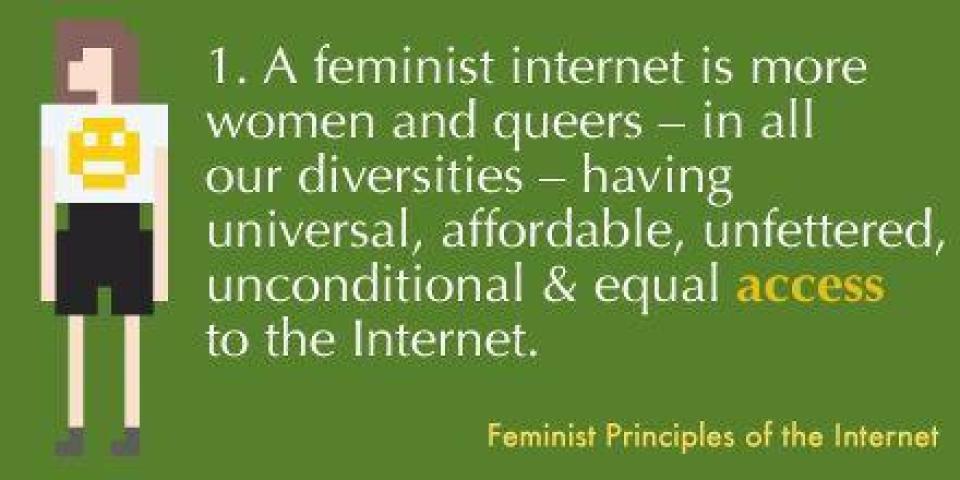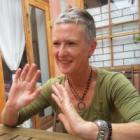
Nighat Dad (@nighatdad): Restricting women the access to technology is a global structural problem says @Flarue_libex #SIF2015
A gender digital divide has been recognised since the 1990s. It’s old news that there are gaps when it comes to women being able to easily, safely and affordably access technology. There are statistics, research evidence and anecdotal stories that support this. Although some efforts have been made to address this access gap, there is still a persistent and evident gender digital divide.
So what we need is a deeper exploration and an honest, collaborative excavation of this gender access gap in order to understand and upfront the challenges, intersectionalities and barriers. This is what the pre-event hosted by the Association for Progressive Communications Women’s Rights Programme (APC WRP) called “Unboxing Gender and Access”, at the 2015 Stockholm Internet Forum (SIF2015) set out to interrogate.
A world cafe-style methodology saw participants interactively explore the multiple dimensions and intersectionalities of gender and access. With partners from around the globe facilitating thematic tables, including Tactical Technology Collective, Asikana Network, Kenya, The GMSA Foundation, Derechos Digitales, Latin America, The Digital Empowerment Foundation, India, The Foundation for Media Alternatives, Philippines, Privacy International and Digital Rights Foundation over 160 participants debated, explored issues, intersectionalities and shared personal narratives around five clusters with framing questions to encourage discussion. Participants could either stay at tables or move according to their passions and interests.
The cluster areas identified were: Availability and Affordability, Capacity and Empowerment, Content, Services and Applications, Human Rights, Culture and Society as well as Decision Making.
All five clusters were given critical cross-cutting questions such as:
- How do socio-cultural factors like gender, geographical location, ethnicity, class, age, sexuality etc intersect and affect these issues?
- What measures need to be taken to frame access as an issue of fundamental human rights and freedoms?
- What are the roles of different stakeholders in addressing the issues?
- How do laws and regulations affect technology use and what changes are needed to create an environment that fosters its use?
Some insights that the unboxing of gender and access expressed
Sthlm Internet Forum (@fxinternet): #feminism is about intersectionality – critically reflecting on problems and solutions, giving voice to the people who don’t have one #SIF15
Sthlm Internet Forum (@fxinternet): #feminism is about intersectionality – critically reflecting on problems and solutions, giving voice to the people who don’t have one #SIF15
Technology does not exist in a vacuum. It is rooted within existing male privileges and power structures and often reproduces and entrenches inequalities, violence and cultural and social domination. The intersectionalities are often ignored when access is seen as a singular issue of physical or structural access. Experiences of the world are impacted by so many various issues and responses
Access, however limited, is being harnessed by women to link women together around potential flash-points of violence in communities, to find opportunities for further education, interrogate parliamentary candidates, find relevant health information, engage with social media to counter misogyny and so much more.
Innovation, adaptation, disrupting and creative engagement are rooted within the feminist movement and women have been using the internet and related technologies, particularly mobile phones, for years. Although this is happening, the gender and access gap has got to be addressed in order to redress structural gender inequality both offline and online.
The thematic tables saw conversations going deep into existing social, cultural, economic and political disparities that impact on access and struggles around how to ensure that access is meaningful and real in order to translate into transformation of lived realities. There is still a struggle to reframe women in technology not as just consumers but as developers and innovators.
@EroTICs_India: We need more women coders; more women in the designing and development of technology. #unboxinggender #sif15 #whydoesaccessmatters
@EroTICs_India: We need more women coders; more women in the designing and development of technology. #UnboxingGender #sif15 #WhyDoesAccessMatter
The decision making round table explored the need to bring more women into internet governance spaces to engage and learn from debates but also to reframe discussions from a women’s rights perspective. Access will remain a singular issue rather than the complex animal that it is, if we don’t ensure that women, with a clear experience and understanding of the intersections of gender and internet rights are in leadership positions in internet governance structures.
Diverse representation of women at national, regional and global levels in decision-making for internet governance is key to enabling access meaningful for women. Encouraging governments to enable the integration of technology throughout society in an equitable and open way is one of the key elements to meaningful access.
Abir Ghattas (@AbirGhattas): Women and minorities ability to access the internet will ensure more gender diversity in content online #unboxingGender #SIF15
Abir Ghattas (@AbirGhattas): Women and minorities ability to access the internet will ensure more gender diversity in content online #unboxingGender #SIF15
Digital literacy often presupposes basic literacy and education without which people are not able to engage and use the internet for their own empowerment. This impacts particularly on women who, in many contexts, are denied a basic education rooted in socio-cultural factors including a belief that women and girls cannot master technology.
Capacity and empowerment rests on a comfort with and understanding of technology which is key to effective use of technology. A key thread which was raised here and in other round tables was the need for women to understand the implications of the technology they use, particularly in relation to privacy, online violence against women(VAW) and securing their online identities.
We need to enable women to create the Web not just be its consumers @avilarenata #SIF15
We need to enable women to create the Web not just be its consumers @avilarenata #SIF15
Online content by women for women is a strong motivation for women to use technology. Being content creators needs an enabling policy environment which does not censor, police or penalise women. This table reiterated what was raised in other groups, that an enabling environment means one that does not reproduce offline violence and misogynistic hate speech or censor sexual content that can enable women and girls to make informed choices about their health and bodily autonomy.
@avilarenata’s aha moment in #sif15: Gov’ts tell us get empowered, innovate and disrupt. But once we do, they shut us down!
@avilarenata’s aha moment in #sif15 Gov’ts tell us get empowered, innovate and disrupt. But once we do, they shut us down!
The table discussing human rights, culture and society saw as core that access enables participation in political processes by marginalised groups. This can re-energise participatory citizenship and in the long-term, to improve governance. Access by a multiplicity of citizens to the internet, changes debates, introduces issues not considered important be some actors, both state and non-state and can enable communities of activists to reframe perceptions.
Forward!
Gender balanced panels should be the new normal says @dorotheakleine at #SIF15
Gender balanced panels should be the new normal says @dorotheakleine at #SIF15
A measure of the success of any event is the outcome. And one of the outcomes of the SIF2015 evaluation is that “The gender lens needs to remain, making gender equality the norm. Stockholm Internet Forum, as well as any event around the globe, need to continuously address the gender perspective. This includes an understanding of intersectionality.”
For more interviews and stories visit: http://www.stockholminternetforum.se/
- 6715 views






Add new comment